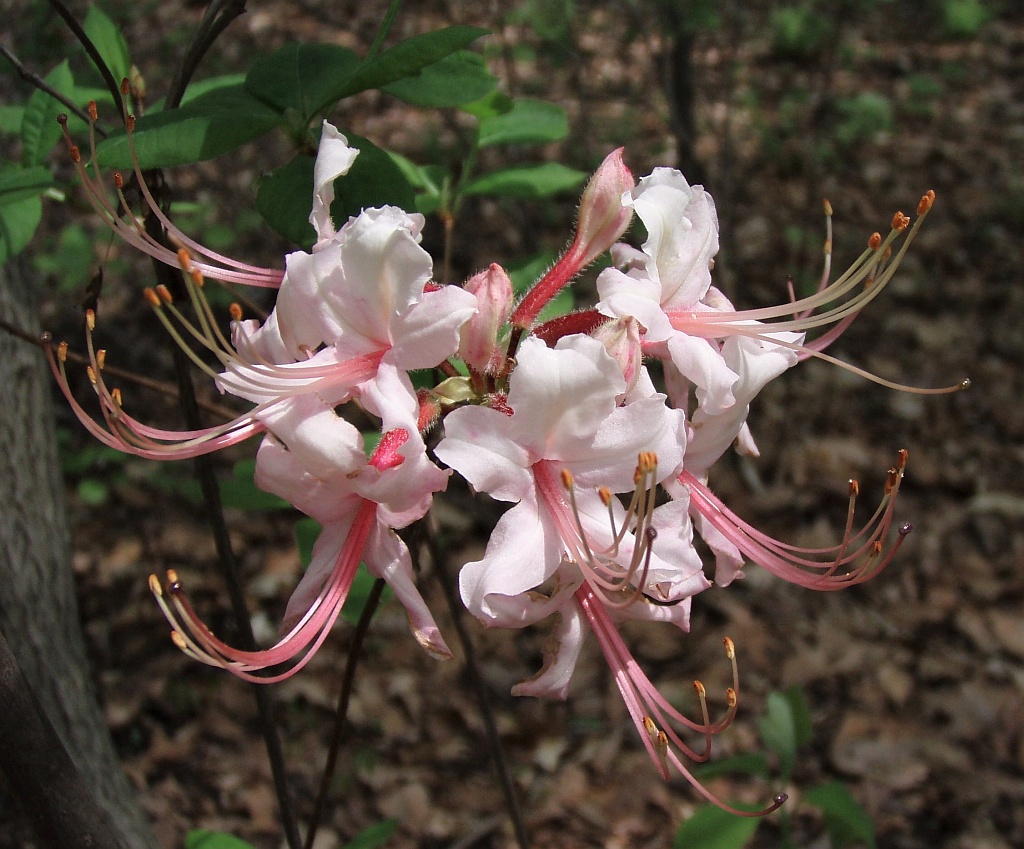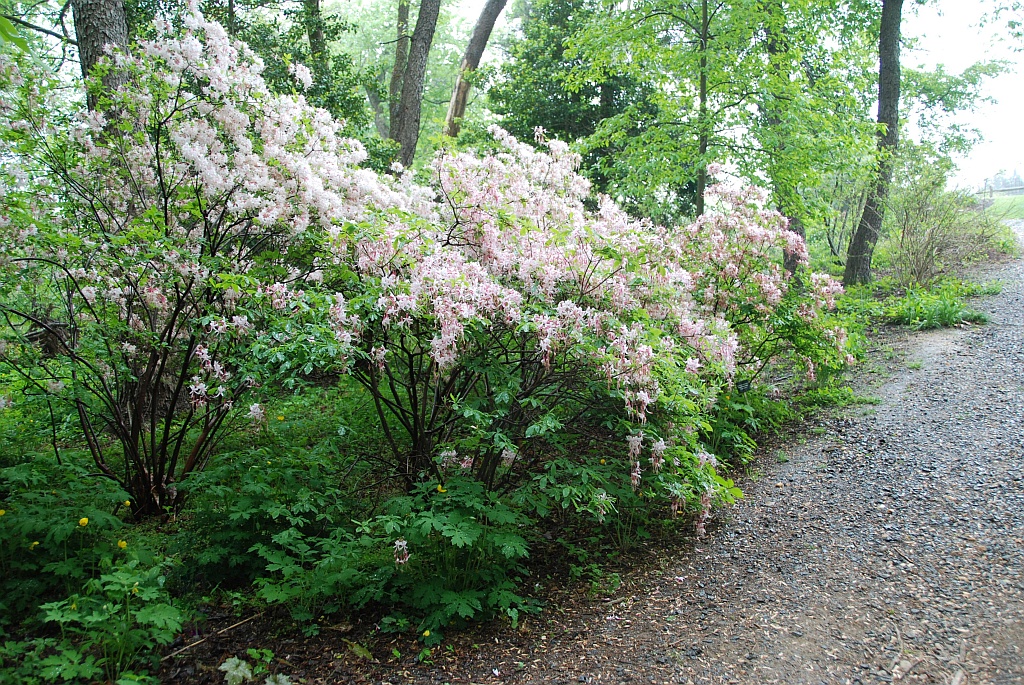Pinxterblooms: Performing Now
By Betsy Washington, Northern Neck Chapter
As I write in mid-April, the lovely Pinxterbloom Azaleas (Rhododendron periclymenoides) are blooming along our roadsides, stream-sides and on forested slopes around Northern Neck. Found from New York to Georgia, these graceful deciduous shrubs flaunt eye-catching clusters of tubular rosy pink flowers at the tips of their branches. If you stop and take a closer look, you can often smell their light spicy fragrance. The shrub is sometimes called Wild Honeysuckle because of the trumpet shaped flowers with deep rosy red floral tubes flaring out into five lighter pink petals, all crowned by long curving rosy stamens that protrude out beyond the petals, resembling honeysuckle blooms.
Unlike their more familiar evergreen Asian cousins, Pinxterbloom Azaleas are deciduous and bloom before the new foliage emerges, creating a particularly stunning show. In fall, their foliage turns yellow before dropping. They are handsome through the year with a picturesque upright layered branching, but they often sucker into striking colonies or groups. Size varies from 2 – 6’ in height but they can occasionally reach up to 10’.
Rhododendron periclymenoides grow naturally in mixed deciduous forests, along streams, swamp edges and ravines, where they can form dense thickets. But this adaptable shrub also occurs in nutrient-poor, hardpan clay soils in upland forests. I very frequently see them along roadsides where they receive more sun — sometimes a single bush and other times in a multi-shrub mass. Pinxterblooms tolerate heavy shade but thrive and bloom best where they receive a half day of sun or more.
These shrubs are easy to grow in moist but well drained acidic soils. Planting them with at least a half day of sun will help keep them compact and encourage profuse blooms. Pinxterblooms are relatively slow growing but are very adaptable to heat, drought, soil compaction and a range of drainage conditions. They are especially effective planted along woodland edges or in riparian areas along streamside slopes where their fibrous roots and suckering habit helps prevent erosion. Or plant them along a woodland path underplanted with spring wildflowers where you can enjoy their beauty and fragrance.
Pinxterblooms attract many pollinators including hummingbirds and bumblebees. Recent research has shown that showy swallowtail butterflies are also important pollinators. And if that isn’t enough to encourage you to plant them, our native azaleas host at least 50 species of native caterpillars, including Hairstreaks and Brown Elfins.
Look for these beautiful shrubs along our roadsides and streams and prepare to fall in love.
Our Northern Neck Chapter will have a large number for sale propagated from locally native plants at the Northern Neck Native Plant Society plant sale the first Saturday after Labor Day in September. Visit the VNPS Northern Neck Chapter website.
Editor’s Note: This article first appeared as the Plant of the Month for April, 2020 on the blog of the Northern Neck Chapter of VNPS.



I have always loved these plants. This Spring I have been looking for places where I can buy them. It is really hard to find a source. I was able to order a few from the Rare Find Nursery. The Carolina Native Nursery in NC (https://www.carolinanativenursery.com/retail-shop) has the best selection that I have found and decent prices, but they won’t ship them. They deliver locally or you can pick them up. A friend tells me these plants are deer candy and will need to be protected. But I think they are some our most beautiful native plants!! So I will keep planting them.
I saw one of these on the Bassett Hall Nature Trail in Williamsburg. It was so showy, I thought it was an ornamental that escaped. Glad to learn it is a native.